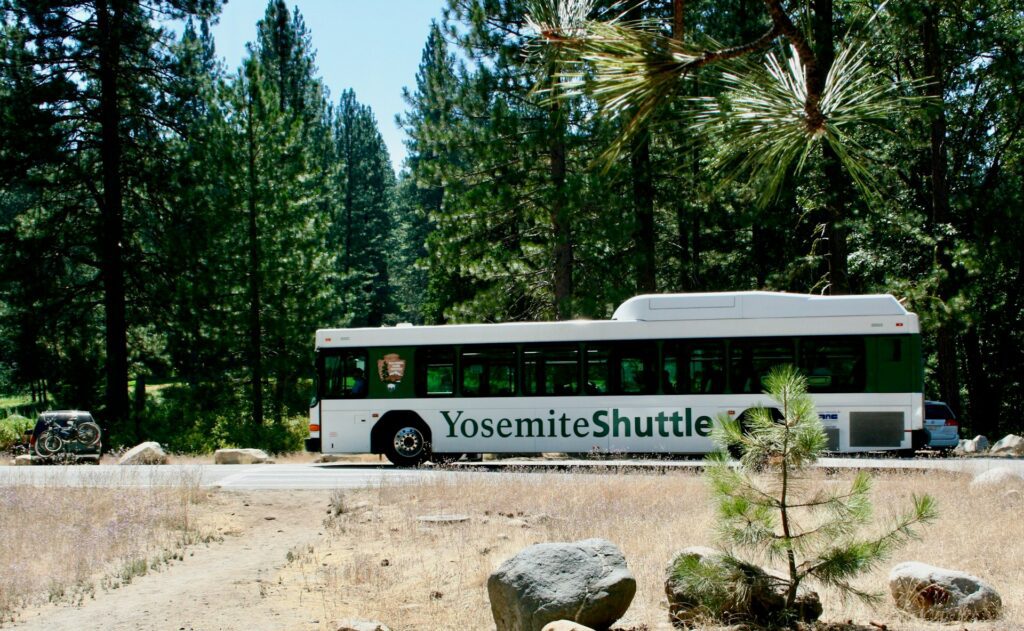Yosemite National Park is a breathtaking wonderland, and exploring it should be as stress-free as possible. In 2025, Yosemite’s public transportation and shuttle services are set to make your visit even more seamless. Whether you’re a first-time visitor or a seasoned adventurer, understanding how to navigate these services can enhance your experience immensely.
I’ve always found that knowing the ins and outs of a park’s transportation system can turn a good trip into an unforgettable one. With Yosemite’s commitment to sustainability and reducing traffic congestion, their updated shuttle and public transport options promise to be both eco-friendly and convenient. From hopping on a shuttle to reach iconic spots like Yosemite Falls to taking a scenic bus ride through the park’s lush landscapes, these services are designed to make your journey as enjoyable as the destination itself.
Overview Of Yosemite’s Transportation System
Yosemite’s transportation system in 2025 features modern public transit options designed for efficiency and accessibility. Visitors enjoy seamless travel within the park due to strategic shuttle routes and improved infrastructure. The system reduces vehicle emissions while offering a more immersive natural experience.
The shuttle network connects key locations, making it easy to reach popular spots like El Capitan and Mariposa Grove. Electric buses, powered by renewable energy, provide quiet and environmentally friendly rides. Shuttle frequency accommodates both peak season crowds and off-peak visitors, ensuring a smooth experience for all.
Public transportation within Yosemite also supports those planning extended stays. Campground loops and trailheads are accessible, allowing for more convenient exploration. The park’s dedication to sustainability is evident in its commitment to green energy and minimal environmental impact.
With these thoughtful enhancements, Yosemite’s transportation system promises a hassle-free adventure, enabling everyone to focus on enjoying the park’s stunning landscapes and diverse ecosystems.
Public Transportation Options
Public transportation in Yosemite provides diverse solutions for exploring the park efficiently. In 2025, revamped services promise to enhance the traveling experience.
Buses And Trains
Buses provide essential links between park attractions. They’re scheduled frequently to maximize convenience, tapping into various spots like Yosemite Valley and Tuolumne Meadows. Electric buses run on renewable energy, minimizing emissions and noise. Regional trains connect nearby cities to bus terminals, simplifying access. This integration means I can transition from train to park shuttle seamlessly, avoiding parking hassles.
Ride-Sharing And Car Services
Ride-sharing apps offer flexible transport for visitors. Options such as Uber and Lyft allow rides straight to park entrances, while car services offer private alternatives for comfort. These services work best for groups or those with specific schedules. By choosing ride-sharing, I contribute to reduced traffic and environmental impact, aligning with Yosemite’s sustainability ethos.
Shuttle Services Inside Yosemite
Yosemite’s shuttle services provide an easy way to explore the park without a car. In 2025, these services offer enhanced routes and accessibility features.
Route Details And Schedules
Extensive shuttle routes connect Yosemite’s iconic sites, ensuring easy access to attractions like Yosemite Valley, Tunnel View, and Glacier Point. The main shuttle loop operates every 10-15 minutes during peak times, reducing wait times. Seasonal routes, available during summer, link lesser-known areas, expanding your visit possibilities. Real-time schedule updates via the park’s app make planning effortless.
Accessibility And Amenities
Modern shuttles include ramps, designated spaces for wheelchairs, and priority seating for those with mobility issues, ensuring travel comfort for all. Free Wi-Fi on board keeps you connected, while large windows provide stunning views of the park’s landscapes. Audio guides in multiple languages offer insights into the park’s history and ecosystems, enhancing your journey.
Tips For Using Public Transport
Navigating Yosemite’s public transport in 2025 can enhance your park visit. Efficiently plan your experiences and maximize your time with the following tips.
Planning Your Itinerary
Organizing your schedule improves your experience. Identify key locations you want to visit, like Yosemite Valley or Glacier Point. Use the park’s app for real-time transport updates to plan your route efficiently. Check shuttle operating hours, especially seasonal routes, to optimize your travel time and reduce wait times.
Booking And Reservations
Securing transportation can help avoid day-of stress. For popular shuttle routes or specific time slots, reservations may be required, so book early if this is the case. While standard rides don’t need advanced booking, reserving campsites or accommodations with nearby shuttle stops can also streamline your visit. Keep digital or printed confirmation details handy to ensure a smooth boarding process.
Pros And Cons Of Using Yosemite’s Transportation
Exploring Yosemite using its transportation options offers both advantages and challenges. Consider these key points to understand how these services might affect your visit.
Environmental Impact
Yosemite’s transportation system reduces vehicle emissions significantly, benefiting the environment. By utilizing electric buses and shuttles, emissions decrease, promoting cleaner air and preserving natural beauty. However, relying on public systems might restrict individual exploration, particularly in less accessible park areas. Private vehicles offer flexibility not possible with fixed shuttle routes.
Cost And Convenience
Using public transportation in Yosemite is budget-friendly, making it an attractive option for cost-conscious travelers. Free or low-cost shuttles reduce the necessity of car rentals and related expenses. Conversely, these services can lead to travel time constraints, especially during peak hours when demand is high. Visitors might encounter crowded shuttles, requiring patience, but the convenience of eliminating parking worries often outweighs these concerns.
Conclusion
Navigating Yosemite’s public transportation and shuttle services in 2025 promises to be an exciting and eco-friendly adventure. With the park’s commitment to sustainability and visitor convenience, these modern transit options will make exploring Yosemite’s breathtaking landscapes easier than ever. Whether you’re planning a quick visit or a longer stay, the seamless integration of shuttles, buses, and regional trains will enhance your experience while minimizing your environmental footprint.
By embracing these transportation upgrades, we can all contribute to preserving Yosemite’s natural beauty for future generations. So pack your bags, plan your itinerary, and get ready to enjoy a stress-free journey through one of the world’s most stunning national parks.


